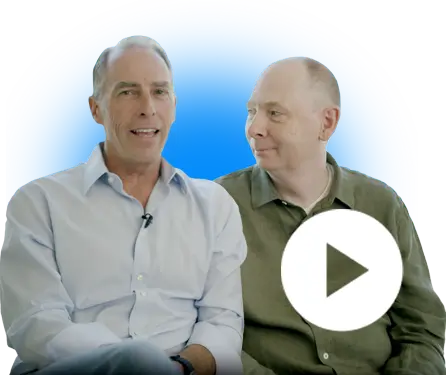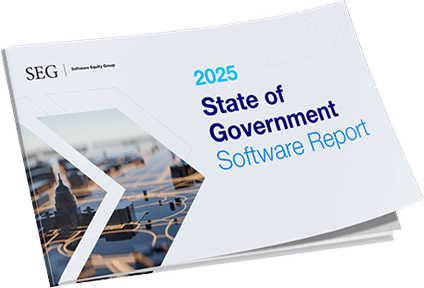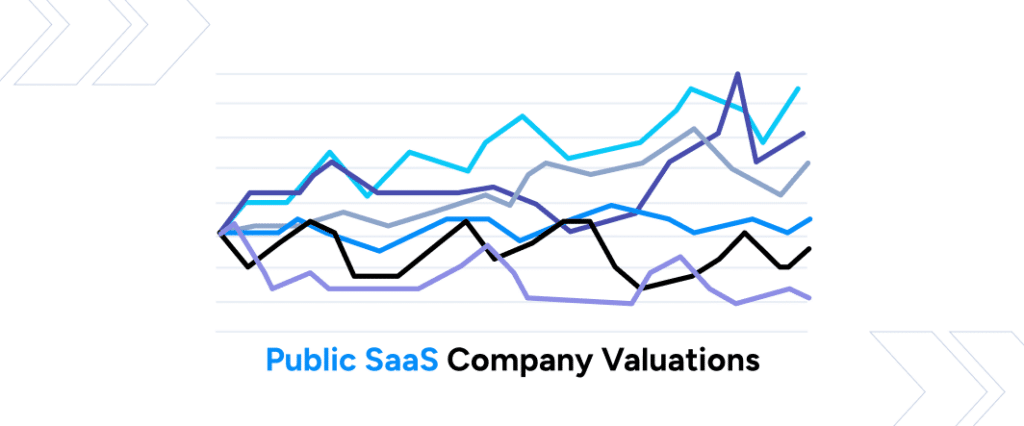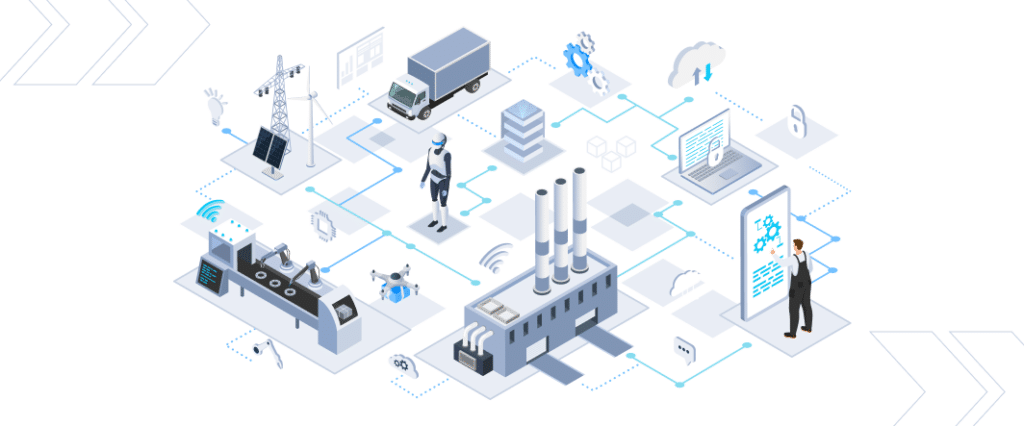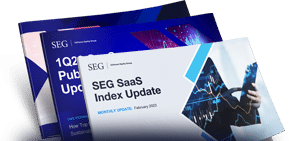Virtual Coffee with SEG: Vista’s View of the SaaS Marketplace

Coffee with Alan Cline, Senior Managing Director of Vista Equity Partners
What is the current state of the SaaS marketplace from the perspective of a leading SaaS investor? Software Equity Group’s Managing Partner, Allen Cinzori, had an opportunity to have a “Virtual Coffee” with Alan Cline, Senior Managing Director of Vista Equity Partners, to discuss this very topic.
Vista Equity Partners is a U.S.-based investment firm with more than $57 billion in cumulative capital commitments. The company focuses on enterprise software market across private equity, permanent capital, credit, and public equity investments.
Here are some highlights from the discussion. To view the entire video, select the link below.
Click to Watch Virtual Coffee with SEG
- Allen: SEG recently published an article highlighting how SaaS businesses would truly be tested for the first time during the pandemic…we called it “Surviving the SaaS pressure cooker.” How have Vista’s portfolio of SaaS businesses, and perhaps Endeavor Fund companies, held up over the past few months? How is the durability of B2B SaaS models holding up? And, lastly, how do you believe this period impacts the demand for SaaS assets in the future?
- Allen: How do you define an attractive vertical or product category today? What are the hallmarks? What are the top three things you are looking for?
- Allen: I recently read an article on Vista’s website that stated: “Women make up 43% of Vista’s workforce, compared to only 18% for the private equity industry on average. Further, about 30% of Vista’s employees are people of color, and two out of Vista’s six funds are co-headed by women.” What has Vista been doing to drive these higher levels of diversity?
- Allen: What is one piece of advice you’d like to give to SaaS operators right now?
Allen: SEG recently published an article highlighting how SaaS businesses would truly be tested for the first time during the pandemic…we called it “Surviving the SaaS pressure cooker.” How have Vista’s portfolio of SaaS businesses, and perhaps Endeavor Fund companies, held up over the past few months? How is the durability of B2B SaaS models holding up? And, lastly, how do you believe this period impacts the demand for SaaS assets in the future?
- Alan: Overall, the Vista portfolio is holding up very well for a few key reasons. First, the strength of the software business model is proving its value right now. Second, Vista’s focus on mission critical, high ROI, high recurring revenue, and high retention businesses positions us to be recession resistant. Lastly, we reacted quickly to help our executive teams understand the implications for their businesses and adjust to the COVID world. We anticipate a good year in 2020, maybe not what was forecasted in January, but a good year nonetheless.
- Alan: To your second point, we’ve been largely in an uninterrupted bull market for the last 10 years. This has led to a lot of growth and value creation, but also a lack of appreciation for the impact of a business cycle and how to manage your business when all is not well. We also have an entirely new class of CEOs, many of whom have never been the CEO through a downturn. In the end though, I think there will be a tremendous amount of managerial growth this year.
- Alan: To your third point, what does this mean for SaaS? SaaS is ultimately a delivery and pricing model. Not all SaaS businesses are created equal, and this period of equilibrium will sort out quality among the SaaS universe. I suspect we’re going to find that the companies that do the best this year are going to warrant a premium value going forward. Those that don’t have that same durability are going to see that reflected in the interest in values for their businesses. Beyond the economic implications, what we’re seeing for remote work will drive even more demand for SaaS. Again, not everyone’s going to be created equal, though. Those that are aligned with the distributed workforce, working collaboratively, and enabling folks to do that successfully from different environments are going to be the winners on that front on a relative basis.
Allen: How do you define an attractive vertical or product category today? What are the hallmarks? What are the top three things you are looking for?
- Alan: The first would be if the product offering is really mission critical. If yes, great. If not, well, how close to mission critical is it? The second is what is your market size or segment vulnerability? We’re finding SMB far more vulnerable than the middle market enterprise for a variety of reasons, including the business’s size and their access to capital markets. Lastly, the end customer’s health and durability, and quality of their business model matters.
- Alan: Here are two more for free. Single factor risk is killer. Customer concentration, regulatory risk, and vulnerable industries are rearing their head right now. On a positive side, some of the secular trends that we’re seeing are really prevailing, including cyber security and risk management. The dynamics are driving more of a remote working environment.
Allen: I recently read an article on Vista’s website that stated: “Women make up 43% of Vista’s workforce, compared to only 18% for the private equity industry on average. Further, about 30% of Vista’s employees are people of color, and two out of Vista’s six funds are co-headed by women.” What has Vista been doing to drive these higher levels of diversity?
- Alan: It’s a timely topic. Yes, we’ve worked hard at it, and I think we’ve done an above average job in the industry. But frankly, we can do better. Right now, we’re focused on thinking though what we can do to be better from a company standpoint, through our portfolio companies, and through our sphere of influence. As part of that, what can we do to take a leadership role in that? We believe, as majority investors in a broad number of technology companies, that if we do this collectively, we can have a far better impact than individually working on it alone.
- Alan: What we’re seeing is greater engagement and a willingness of people to listen to what we can do differently and better in the future. We’re starting with three things. First is ourselves. I think if you don’t set the example within your own organization, it will fall upon deaf ears at the companies you invest in. The second is with our portfolio. As investors and board members, we can help in a number of ways. We can help companies assess where they are on their maturity curve on that front, and provide them opportunities, resources, and examples within the portfolio or within Vista. We can help provide the reporting and accountability processes to ensure we’re making progress. The third is really thinking about our sphere of influence, which goes well beyond the four walls of Vista. How do we interact with and select our vendors? If we do all that, I think the competition will follow. Vista is in a leadership position in many regards, and if we set an example, it gives people a path to follow that will hopefully have an impact beyond what we do directly.
- Alan: And finally, in this topic, I would share our founder and chairman, Robert Smith’s, optimism that we are at an inflection point of increased awareness. There appears to be a sincere interest by many people to do more, to do better. The proof will be in the actions that follow and the results that we try to generate. I’m a big believer in the laws of nature, and momentum and inertia or two of those. The corporate world has been in a state of inertia on this topic for a long time. There’s been some progress, but far less than what we should have made. It feels like we’re at a tipping point toward momentum, and the time to act to capitalize on that momentum and the willingness of people to listen and adopt and change is now. I would keep an eye out for what we’re doing, and hopefully we’ll give people ideas and move forward on that front.
Allen: What is one piece of advice you’d like to give to SaaS operators right now?
- Alan: I would be introspective, get back to basics, and use this year as a reset. Start by revisiting your customer value proposition and your commitment to customer success. Revisit your social contract with your employees and understand how your culture is either a thriving or straining during this time. Culture can be something that you write down with platitudes on the wall. Now is the time where it’s being tested. Lastly, reassess how you’re spending your time. The world has been trained on virtual meetings, so is there a way to leverage that in the future?
- Alan: Take all of that and reassess your goals and objectives. Make a new plan. You have six months or so to redesign what you want your business to be in 2021. I think that is the gift that’s tucked into 2020. When the game slows down, you have the ability to do all these things. Those who really focus and do that well are going to be in great shape in 2021. I think they will be pleased with the growth and development that they and their organizations experience as a result.
“Virtual Coffee with SEG” are conversations with industry experts, providing real-time insights into the current market and self-help advice to SaaS CEOs and operators.
Please reach out if you’d like to discuss how current events may impact your software company’s near and long-term plans. View our last Virtual Coffee with SEG: Considerations for Returning to the Office.
